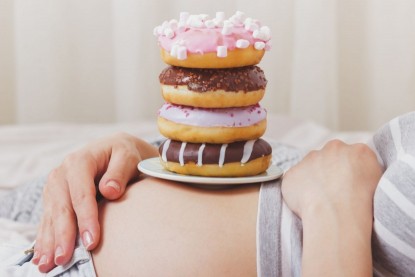Sometime between now and 28 weeks, your doctor will likely want you to have a Glucose Challenge Test or GCT (sometimes referred to as a "Glucola Test"). This test is a blood test that checks for indications of gestational diabetes. Gestational diabetes is a pregnancy-related condition where you experience high blood sugar. If left untreated, it can lead to complications with the baby growing too large for delivery, or he can experience low blood sugar after birth. Also, studies indicate that babies born to mothers with gestational diabetes are more likely to be overweight as children. Testing positive on the GCT doesn't necessarily mean you have gestational diabetes. Still, it does mean there is a Glucose Tolerance Test (GTT) in your near future that can determine if you have gestational diabetes.
The GTT is a series of blood draws that happen at varying intervals after you drink a glucose-based drink. This in-depth test tracks how well your body and insulin handle increased blood sugar over time. It is a far more sensitive and accurate test that will give your doctor the information they need to determine if you have gestational diabetes or if you should continue to be monitored. Should you have any indicators of insulin/sugar trouble, your doctor will have you change your diet and exercise to help control your sugar levels going forward to avoid complications.
Other funny and random symptoms might also be happening about this time. With your hormones doing things they have never done before, it isn't surprising they are causing other changes in your body like skin tags, darkening moles, and itchy red palms and soles are some of these weird symptoms. While it often means nothing, the red palms and soles can potentially indicate a rare pregnancy complication known as cholestasis. While the redness will go away after the baby is born, you can help prevent it from getting redder by avoiding getting overheated in hot baths or showers or wearing gloves and socks that are too tight.
Reference Source
- Mayo Clinic - Glucose Challenge Test
- Mayo Clinic - Glucose Tolerance Test



